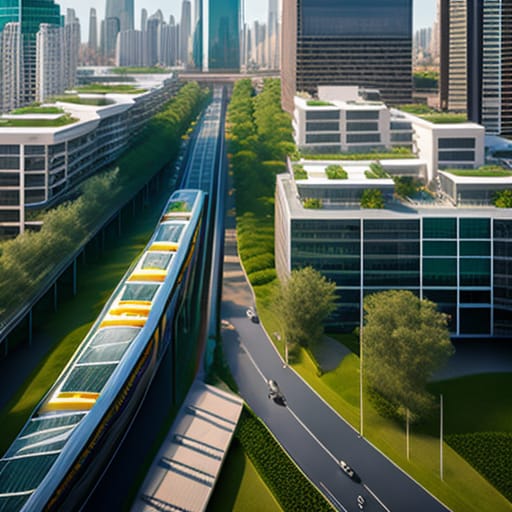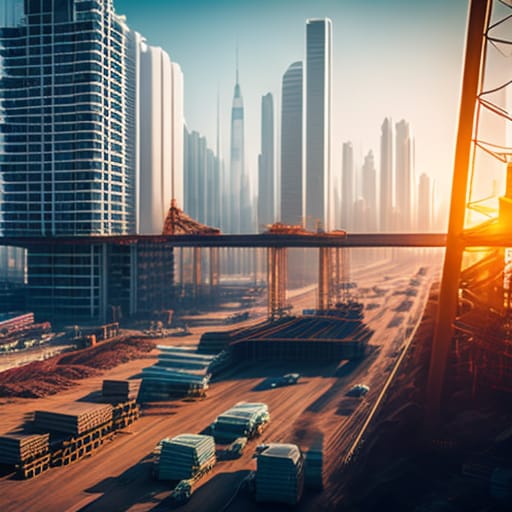Urban areas around the world are rapidly evolving to meet the needs of growing populations and advancements in technology. From smart cities to sustainable communities, city building blocks play a vital role in how cities are planned, designed, and developed. This beginner’s guide will explore the basics of city building blocks, their importance in urban development, and how they are being utilized to shape the cities of the future.
What Are City Building Blocks?
City building blocks refer to the foundational components that make up the infrastructure, landscape, and layout of urban areas. They include both physical structures like roads, bridges, buildings, parks etc. as well as intangible elements like zoning policies, building codes, transportation routes, and public amenities. The arrangement and efficiency of a city’s building blocks greatly impacts livability, sustainability, and access to opportunities for residents.
Some examples of key city building blocks include:
- Transportation networks (roads, trains, buses)
- Public infrastructure (schools, hospitals, parks etc.)
- Energy and utilities distribution
- Telecommunication networks
- Zoning and land usage policies
- Building codes and regulations
- Green spaces and ecological corridors
The thoughtful integration of these vital components of urban anatomy allows cities to grow in organized, strategic ways. Getting the mix of building blocks right is crucial for supporting population needs now and into the future.
The key benefits provided by robust city building blocks include:
- Increased livability and quality of life
- Greater mobility and connectivity
- Improved access to amenities and opportunities
- Enhanced economic prosperity
- Environmental sustainability and resilience
- Equitable distribution of resources and public goods
As cities work to address pressing issues like affordable housing shortages, congestion, climate change risks, and socioeconomic disparities, city building blocks offer holistic solutions tied to urban planning and development.
The Role of City Building Blocks in Smart Cities
The smart cities movement leverages technology and innovative policymaking to improve the efficiency and sustainability of urban operations. From intelligent transport systems to blue-green infrastructure, smart cities deploy digital solutions integrated with physical assets.
City building blocks thus provide the structural foundation upon which smart cities grow. Some examples include:
- Smart energy grids – Advanced metering infrastructure connected through telecom networks to optimize energy distribution.
- Intelligent transport systems – Traffic surveillance cameras, adaptive signaling, and command centers to monitor and regulate traffic flows.
- e-Governance platforms – Digital portals and civic apps that enable real-time information exchange between government agencies and the public.
- Green buildings – Sustainable construction materials, energy-conserving designs, renewable energy integration to reduce environmental impact.
When anchored around people-centric technologies and policies, smart cities improve connectivity, inclusion, and resilience – raising quality of life across demographic groups.
According to Juniper Research:
Over 75% of smart city technology investments are targeted to advance sustainability, equity, safety, and economic development goals.
Strategically arranged city building blocks help translate these complex digital interventions into balanced, citizen-oriented urban growth.

Sustainable Communities and City Building Blocks
Sustainable community planning coordinates networks of city building blocks to support both human wellbeing as well as environmental health.
As urban areas grow larger, balancing increasing density with ecological protections is vital. Sustainable communities adopt integrated approaches across areas like:
- Transportation planning
- Green space conservation
- Renewable energy
- Affordable housing
- Local food systems
Some examples of sustainable city building blocks include:
- Dedicated bus lanes, EV charging stations, and bike share programs to reduce emissions
- Wetland restoration providing natural flood barriers and cleaning waterways
- Community solar and wind installations meeting local, clean energy needs
- Mixed-use, mixed income housing developments preventing displacement
- Edible gardens, farmers markets, and urban farms supplying hyperlocal foods
Proactively embedding these assets using sustainable city frameworks yields compounding social, economic, and environmental benefits over time.
The Urban Land Institute finds:
Sustainable community development practices can reduce infrastructure capital costs by 50-80% while creating public health benefits worth 3-10 times the initial investment.
As cities work towards aggressive climate goals, sustainable communities powered by city building blocks offer holistic pathways that leave no one behind.
Innovations in City Building Blocks
Technology is enabling urban planners to design radically new types of city building blocks tuned to the realities of 21st century cities.
Modular Construction
- Stackable, prefabricated units can be arranged to create modular hospitals, schools, offices, and housing units.
- Allows flexible rearrangement as needs change over time.
- Enables precision manufacturing and mass customization.
Blue-Green Infrastructure
- Networks of waterways, bioswales, green roofs, and wetlands manage stormwater naturally while enhancing ecosystems.
- Drought and flood resilient. Helps recharge groundwater reservoirs.
- Provides cooler microclimates to counter urban heat island effect.
Urban Air Mobility
- Electric passenger drones and vertiports provide unmatched point-to-point connections not limited by road networks below.
- Congestion relief and emergency access advantages.
- New dimension to transit networks alongside roads, rail, etc.
By combining design innovations with smart city technology, the next generation of city building blocks are arriving.
Case Study: NEOM’s The Line
The Line is a linear smart city being built in NEOM, Saudi Arabia on a footprint of just 200 meters wide but 170 kilometers long. The ultra-efficient design is enabled by:
- Autonomous mobility pods instead of cars
- Modular, smart infrastructure packed along central spine
- All amenities within 5 minute walk
- 100% renewable energy supply
- Advanced connectivity and IoT integration
The Line provides a glimpse into how innovations in city building blocks can achieve sustainability at massive scale.

Key Takeaways
City building blocks provide the structural foundation for organizing urban growth in strategic ways. Key points covered include:
- City building blocks include the infrastructure, policies, and frameworks directing how cities physically develop.
- Thoughtfully arranged, people-centric building blocks enhance sustainability, inclusion and quality of life as cities grow.
- Smart cities and sustainable community planning increasingly draw upon innovative building blocks enabled by new technologies.
- Integrating digital solutions with physical urban assets offers expanded possibilities for meeting complex modern challenges.
- Ongoing advances will enable mass customizable, smart city building blocks tuned for efficiency and resilience.
By leveraging both emerging and time-tested city building blocks, urban planners worldwide are reimagining cities that uplift all who shape them.
Thriving metropolises worldwide demonstrate how crafting shared spaces that balance liveability with sustainability depends first upon getting the building blocks right. Understanding these foundational components enables smarter communities that benefit all citizens for generations.
Frequently Asked Questions
What are some examples of city building blocks?
Some examples include transportation networks, public infrastructure like schools and hospitals, energy and utilities distribution, telecommunication networks, zoning policies, building codes and regulations, green spaces and ecological corridors.
How do city building blocks relate to smart cities?
City building blocks provide the physical foundation onto which smart city technologies like intelligent transport systems, e-governance platforms, and smart grids can be effectively integrated.
What is sustainable community planning?
Sustainable community planning coordinates city building blocks like public transit, green infrastructure, renewable energy, affordable housing etc. to promote both environmental health and human wellbeing.
How are innovations changing city building blocks?
Emerging city building blocks like modular construction units, blue-green infrastructure, and Urban Air Mobility are enabling more efficient, resilient, and adaptive urban environments tuned to modern needs.
Why are city building blocks important for urban development?
City building blocks allow cities to grow in organized ways that improve livability, connectivity, mobility, sustainability, and equitable access to opportunities and resources for citizens.
Thriving metropolises worldwide demonstrate how crafting shared spaces that balance liveability with sustainability depends first upon getting the building blocks right. Understanding these foundational components enables smarter communities that benefit all citizens for generations.
